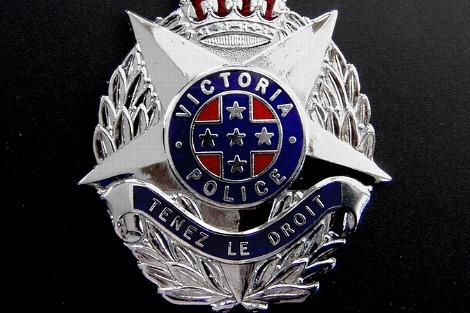No Copping out of Abuse Blame
By Frank Brennan
Australia's quest to uncover the plague of child abuse and put right the failure of government and non-government organisations (including churches) to deal compassionately and justly with victims, and firmly and appropriately with perpetrators, continues. Quite rightly, the Catholic Church remains in the spotlight. In February, retired judge Tony Whitlam QC reported on the 'Father F' Case in Armidale. He highlighted that all the blame did not lie just with the deceased bishop Kennedy. There were systemic failures not just in the Church but also with psychologists, the police and the courts. This month, the Victorian parliamentary committee's report 'Betrayal Of Trust: Inquiry Into The Handling Of Child Abuse By Religious And Other Non-Government Organisations' was published. The Catholic Church hierarchy now seems more prepared to admit institutional and personal failures prior to 1996 when Towards Healing and the Melbourne Response were instituted. They are yet to admit the pervasive, closed clericalist culture which infected the Church until at least 1996. But that will come. Cardinal Pell who had been an auxiliary bishop in the Melbourne Archdiocese from 1987 to 1996 when he then was made Archbishop told the Victorian inquiry: As an auxiliary bishop to Archbishop Little I did not have the authority to handle these matters and had only some general impressions about the response that was being made at that time, but this was sufficient to make it clear to me that this was an issue which needed urgent attention and that we needed to do much better in our response. Understandably, this left many people inside and outside the Church wondering, 'If Archbishop Little didn't act between 1987 and 1996, why didn't his auxiliary Bishop Pell try to do something?' and 'If the Archbishop knew during those nine years, why didn't his Auxiliary?' Welcoming the report, Cardinal Pell said: The report details some of the serious failures in the way the church dealt with these crimes and responded to victims, especially before the procedural reforms of the mid 1990s. Irreparable damage has been caused. By the standards of common decency and by today's standards, church authorities were not only slow to deal with the abuse, but sometimes did not deal with it in any appropriate way at all. This is indefensible. This refreshing change of tone and collective acceptance of responsibility makes it possible to get some clearer air in the public domain about noble, principled and professional efforts post-1996 as well as unfortunate continued shortcomings. Many of those efforts included highly cooperative, though flawed, initiatives involving both Church and police. If the Church maintains the approach that only deceased individual bishops and superiors were to blame prior to 1996, it will be doing a disservice not only to the victims but also to other members of the Church community hoping and praying that the Church might be the exemplar of faith, hope and love — faith in a just and forgiving God, hope for all, including those whose lives have been wrecked by criminal abuse, and love for all, including the primary and secondary victims, erring clerics, our enemies and biased critics. During the course of the Victorian Parliamentary Inquiry, the Victorian police gave evidence and ran a media campaign suggesting they had long been dissatisfied with the Catholic Church's attempt to come to terms with child sexual abuse in its ranks. But the Inquiry found: The Catholic Church established the Melbourne Response (in 1996) in consultation with Victoria Police and the Victorian Government. Assistant Commissioner Gavan Brown, and the Solicitor-General each approved and signed off on the process. There was no indication that at anytime before April 2012 Victoria Police told the Catholic Archdiocese of Melbourne that it had any concerns about the Melbourne Response. It is clear that Victoria police paid inadequate attention to the fundamental problems of the Melbourne Response arrangements until relatively recently in April 2012 and that, when they did become the subject of public attention, Victoria Police representatives endeavoured quite unfairly to distance the organisation from them. Let's hope that the Victorian police, like the Church hierarchy, can now move forward admitting past mistakes without manufacturing excuses which do not withstand the contemporary spotlight. It was very disheartening to hear the Victorian Acting Commissioner of Police Graham Ashton on 20 November 2013 trying to explain the police failure to raise any alarm bells before April 2012. On Melbourne radio, he suggested to Neil Mitchell after release of the parliamentary report that the police might have acted much earlier, even seizing church documents if only they knew where the documents were. He said, 'Neil, that's the thing, you can go in with a search warrant and turn up empty handed, that regularly happens to us. So you need actually good information on where documents are stored, or other materials that, in fact, you're searching for.' The truth is that the police knew all along where the documents were. There was close, familiar cooperation between Church and police. All relevant documents were in the Archdiocesan offices and in the chambers of the church's independent commissioner Peter O'Callaghan QC. Back in October 1996, the Victorian police had issued a media release saying: Police have welcomed the appointment of Peter O'Callaghan QC to the position of Independent Commissioner. They say that they are pleased to see the appointment of the commissioner will not in any way conflict with police investigations or actions in respect to sexual abuse. Police are hopeful that the appointment of the commissioner will assist [to] identify those engaging in sexual abuse and result in them being dealt with by the law. If thereafter police did not know where necessary documents for an investigation were, all they had to do was ask; from 1996 there had been the closest possible cooperation between the Church and the police. We all have to wear the wrap when inquiries come with the benefit of hindsight saying we can do better. The next report will be the Cunneen Report which investigated abuse and cover-ups in the Catholic diocese of Maitland and Newcastle. It will be published on 28 February 2014. It will focus on the Church and its relationship with the New South Wales police. There will be big learnings there too, both for the Church and for the police. Meanwhile, the $434 million federal Royal Commission is gearing up for public hearings into the Catholic Church commencing on 9 December 2013. Justice McClellan has requested an increase in staff from 160 to 260. He says, 'The primary task of the Royal Commission is to listen to the personal stories of sexual abuse' and to 'draw from those stories the lessons which we can report to the Australian community in an endeavour to ensure so far as possible the abuse of children in institutions never happens again'. This will occur only if police forces and state child welfare departments are subjected to the same scrutiny as the churches because the avoidance of abuse and cover-up is possible only with the highest cooperation and understanding of those state agencies. If Catholics deny the ongoing adverse effects of clericalism, and if police officers just sit back and play the blame game while media commentators profess the smug assurance of all knowing hindsight, these inquiries will not have dug deep enough for the truth.
|
.
Any original material on these pages is copyright © BishopAccountability.org 2004. Reproduce freely with attribution.

